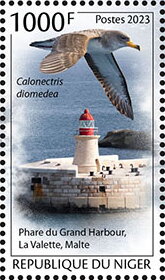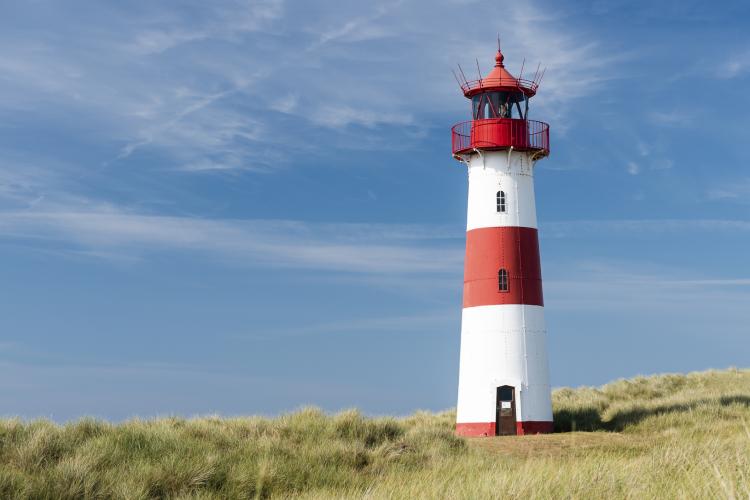Stamp: Calonectris diomedea, Grand Harbor Lighthouse, Valletta, Mal (Niger 2023)
Calonectris diomedea, Grand Harbor Lighthouse, Valletta, Mal (Niger 2023)
20 April (Niger ) within release Lighthouses (2023) goes into circulation Stamp Calonectris diomedea, Grand Harbor Lighthouse, Valletta, Mal face value 1,000 West African CFA franc
| Stamp Calonectris diomedea, Grand Harbor Lighthouse, Valletta, Mal in catalogues | |
|---|---|
| Yvert et Tellier: | Yt: NE 8874 |
Stamp is square format.
Grand Harbor Lighthouse, Valletta, MaltaAlso in the issue Lighthouses (2023):
- Stamp - Calonectris diomedea, Grand Harbor Lighthouse, Valletta, Mal face value 1,000;
- Stamp - Larus argentatus, Lighthouse at the End of the World, La Roc face value 1,000;
- Stamp - Pandion haliaetus, Vorontsov Lighthouse, Odesa, Ukraine face value 1,000;
- Stamp - Stercorarius skua, Barra Lighthouse, Salvador, Brazil face value 1,000;
Stamp Calonectris diomedea, Grand Harbor Lighthouse, Valletta, Mal it reflects the thematic directions:
Animals are multicellular, eukaryotic organisms of the kingdom Animalia (also called Metazoa). All animals are motile, meaning they can move spontaneously and independently, at some point in their lives. Their body plan eventually becomes fixed as they develop, although some undergo a process of metamorphosis later on in their lives. All animals are heterotrophs: they must ingest other organisms or their products for sustenance.
Birds (Aves), a subgroup of Reptiles, are the last living examples of Dinosaurs. They are a group of endothermic vertebrates, characterised by feathers, toothless beaked jaws, the laying of hard-shelled eggs, a high metabolic rate, a four-chambered heart, and a strong yet lightweight skeleton. Birds live worldwide and range in size from the 5 cm (2 in) bee hummingbird to the 2.75 m (9 ft) ostrich. They rank as the class of tetrapods with the most living species, at approximately ten thousand, with more than half of these being passerines, sometimes known as perching birds. Birds are the closest living relatives of crocodilians.
A lighthouse is a tower, building, or other type of structure designed to emit light from a system of lamps and lenses, and to serve as a navigational aid for maritime pilots at sea or on inland waterways. Lighthouses mark dangerous coastlines, hazardous shoals, reefs, and safe entries to harbors, and can assist in aerial navigation. Once widely used, the number of operational lighthouses has declined due to the expense of maintenance and use of electronic navigational systems.
Marine life, or sea life or ocean life, refers to the plants, animals and other organisms that live in the salt water of the sea or ocean, or the brackish water of coastal estuaries. At a fundamental level, marine life helps determine the very nature of our planet. Marine organisms produce much of the oxygen we breathe. Shorelines are in part shaped and protected by marine life, and some marine organisms even help create new land. Altogether there are 230,000 documented marine species, including over 16,000 species of fish, and it has been estimated that nearly two million marine species are yet to be documented. Marine species range in size from the microscopic, including plankton and phytoplankton which can be as small as 0.02 micrometres, to huge cetaceans (whales, dolphins and porpoises) which in the case of the blue whale reach up to 33 metres (109 feet) in length, being the largest known animal.




